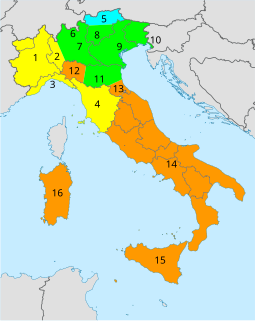 W
WFrench-suited playing cards or French-suited cards are cards that use the French suits of trèfles, carreaux, cœurs, and piques. Each suit contains three face cards; the valet, the dame, and the roi (king). Aside from these aspects, decks can include a wide variety of regional and national patterns which often have different deck sizes. In comparison to Spanish, Italian, German, and Swiss playing cards, French cards are the most widespread due to the geopolitical, commercial, and cultural influence of France, the United Kingdom, and the United States in the past two centuries. Other reasons for their popularity were the simplicity of the suit insignia, which simplifies mass production, and the popularity of whist and contract bridge. The English pattern of French-suited cards is so widespread that it is often also known as the International or Anglo-American pattern.
 W
WGerman-suited playing cards are a style of playing card used in many parts of Central Europe characterised by 32- or 36-card packs with the suits of Acorns (Eichel), Leaves, Hearts and Bells.
 W
WHanafuda (花札) is a style of Japanese playing cards used to play a variety of games. Hanafuda translates to "flower cards". The name also refers to some games played with the cards.
 W
WPlaying cards have been in Italy since the late 14th century. Until the late 19th century, Italy was composed of many smaller independent states or under foreign occupation which led to the development of various regional patterns of playing cards; "Italian suited cards" normally only refer to cards originating from northeastern Italy around the former Republic of Venice, which are largely confined to northern Italy, parts of Switzerland, Dalmatia and southern Montenegro. Other parts of Italy traditionally use traditional local variants of Spanish suits, French suits or German suits.
 W
WPlaying cards have been in Italy since the late 14th century. Until the late 19th century, Italy was composed of many smaller independent states or under foreign occupation which led to the development of various regional patterns of playing cards; "Italian suited cards" normally only refer to cards originating from northeastern Italy around the former Republic of Venice, which are largely confined to northern Italy, parts of Switzerland, Dalmatia and southern Montenegro. Other parts of Italy traditionally use traditional local variants of Spanish suits, French suits or German suits.
 W
WIn playing cards, a suit is one of the categories into which the cards of a deck are divided. Most often, each card bears one of several pips (symbols) showing to which suit it belongs; the suit may alternatively or additionally be indicated by the color printed on the card. The rank for each card is determined by the number of pips on it, except on face cards. Ranking indicates which cards within a suit are better, higher or more valuable than others, whereas there is no order between the suits unless defined in the rules of a specific card game. In a single deck, there is exactly one card of any given rank in any given suit. A deck may include special cards that belong to no suit, often called jokers.
 W
WSpanish-suited playing cards or Spanish-suited cards have four suits and a deck is usually made up of 40 or 48 cards. It is categorized as a Latin-suited deck and has strong similarities with the Italian-suited deck and less to the French deck. Spanish-suited cards are used in Spain, southern Italy, parts of France, Hispanic America, North Africa, and the Philippines.
 W
WParts of Swiss German speaking Switzerland have their own deck of playing cards referred to as Swiss-suited playing cards or Swiss-suited cards. They are mostly used for Jass, the "national card game" of Switzerland. The deck is related to the various German playing cards. Within Switzerland, these decks are called German or Swiss German cards.
 W
WGerman-suited playing cards are a style of playing card used in many parts of Central Europe characterised by 32- or 36-card packs with the suits of Acorns (Eichel), Leaves, Hearts and Bells.